VRC’s Shelby Merritt Reviews the Historic England Archive for ARLIS/NA
 Discover more about England’s archaeology, historic buildings and social history using the Historic England Archive, an online archive that was recently reviewed by Shelby Merritt, assistant curator, HART’s Visual Resources Center, for ARLIS/NA (Art Libraries Society of North America).
Discover more about England’s archaeology, historic buildings and social history using the Historic England Archive, an online archive that was recently reviewed by Shelby Merritt, assistant curator, HART’s Visual Resources Center, for ARLIS/NA (Art Libraries Society of North America).
The Historic England Archive is an online archive produced by the Historic England organization, a public body of the British government sponsored by the Department for Culture, Media, and Sport. Its mission is to protect England’s historical environment by preserving and listing historical buildings and ancient monuments, a mission achieved in part through the Historic England Archive located in Swindon. The archive’s website, launched in 2010, boasts more than one million catalog entries describing photographs, plans, and drawings of England’s buildings and historic sites. Entries include domestic, public, archaeological, and industrial sites alike. Materials date as early as the sixteenth century, though the bulk of the entries are from the nineteenth and twentieth centuries. Read more…
Posted by vrcvanderbilt on October 2, 2017 in HART, News, Technology, VRC, Web
Information Session About HART 4+1 BA/MA Program in History of Art Scheduled for October 5
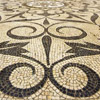 Are you thinking about applying to Vanderbilt’s 4 + 1 BA/MA program in the History of Art? If so, please join us for an information session and lunch reception in the atrium of Cohen Hall on Thursday, October 5, from noon to 12:30 pm.
Are you thinking about applying to Vanderbilt’s 4 + 1 BA/MA program in the History of Art? If so, please join us for an information session and lunch reception in the atrium of Cohen Hall on Thursday, October 5, from noon to 12:30 pm.
Not available to attend that day? Email betsey.a.robinson@vanderbilt.edu to set up a time to talk about the program individually.
Application is open to Vanderbilt seniors in the Department of History of Art and related fields, but planning should begin in the junior year. Interested sophomores are encouraged to learn more now!
Posted by vrcvanderbilt on September 29, 2017 in HART, News, Student/Alumni, VRC
Goran Nikšić to Address the Conservation of Diocletian’s Palace in Split at September 28 AIA Lecture
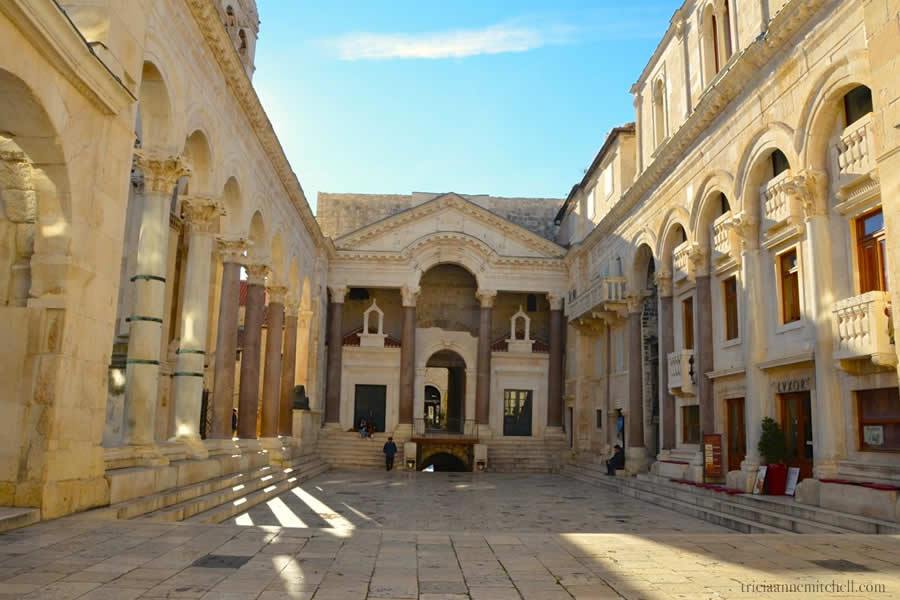 The complicated nature of the archaeological site of Diocletian’s Palace in Split, Croatia, will be the subject of the opening lecture of the 2017-2018 Symposia Series at the Nashville Parthenon on Thursday, September 28, at 6 pm. Goran Nikšić, the city archaeologist and architect for the City of Split, and a senior lecturer in architectural conservation at the University of Split, will address “Split: Conservation of a World Heritage Site” as part of the Archaeological Institute of America’s lecture program.
The complicated nature of the archaeological site of Diocletian’s Palace in Split, Croatia, will be the subject of the opening lecture of the 2017-2018 Symposia Series at the Nashville Parthenon on Thursday, September 28, at 6 pm. Goran Nikšić, the city archaeologist and architect for the City of Split, and a senior lecturer in architectural conservation at the University of Split, will address “Split: Conservation of a World Heritage Site” as part of the Archaeological Institute of America’s lecture program.
A specialist in the history of Roman, medieval and Renaissance architecture, Nikšić will address the challenges of maintaining and studying a site like Diocletian’s Palace — the world’s most complete remains of a Roman palace — in a living, modernizing city.
In 1979 the historic core of Split was declared a World Heritage Site although it has since been threatened by a variety of factors, including the rapid growth of the modern city, the pressure of commercialization, and badly managed historical tourism. During the past two centuries the historic center has been a laboratory for conservation theory and too often viewed as frozen in time instead of part of an active urban landscape.
Nikšić will reconsider this past approach to conservation and how the city is making a fresh start with a changed perspective. He will examine the restoration of such key buildings as the Cathedral (Diocletian’s mausoleum), the Baptistery (the Roman Temple of Jupiter), and the Golden Gate (the formidable stone entryway into Diocletian’s Palace) as examples of good practice, displaying the basic principles to be followed: conservation rather than restoration, use of traditional materials and techniques, emphasis on maintenance of properties, and reconstruction of urban infrastructure.
He holds degrees from the University of Zagreb (Ph.D.), the University of York, and the University of Belgrade. His areas of specialization are architectural conservation and the history of architecture, particularly Roman, Medieval, and Renaissance architecture. From 2004 on he has served as an expert for ICOMOS (International Council on Monuments and Sites).
This lecture, free and open to the public, is cosponsored by the Archaeological Institute of America, Vanderbilt’s Program in Classical and Mediterranean Studies, and The Conservancy for the Parthenon and Centennial Park. Those who plan to attend the AIA lecture are encouraged to call the Nashville Parthenon at 615.862.8431 to reserve a seat.
*Peristyle of Diocletian’s Palace, Split, Croatia. Photograph courtesy of Tricia A. Mitchell
Posted by vrcvanderbilt on September 27, 2017 in Events, HART, Lectures, News, VRC
Vivien Fryd Among Vanderbilt Pioneers Honored at Fisk’s Carl van Vechten Gallery Reception on September 23
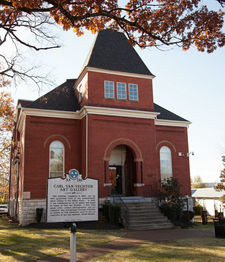 As Chancellor Zeppos often notes, “Vanderbilt University has many living pioneers. Some Vanderbilt pioneers are on campus. Come celebrate these pioneers with us.”
As Chancellor Zeppos often notes, “Vanderbilt University has many living pioneers. Some Vanderbilt pioneers are on campus. Come celebrate these pioneers with us.”
Vivien Fryd, professor of history of art, is among the Vanderbilt pioneers who will be honored at a reception hosted by Fisk and Vanderbilt Universities at Fisk’s Carl Van Vechten Gallery on September 23 from 4 to 5:30 pm.
Fryd was Vanderbilt’s first female full professor of history of art (2003-present) and the first female chair of the Department of History of Art (spring 2009-spring 2012).
The Carl Van Vechten Gallery houses the Alfred Stieglitz collection among other Fisk art collections and is currently hosting photographs by Lucius Outlaw, Vanderbilt professor of philosophy. Among the sponsors of the event are Vanderbilt’s Bishop Joseph Johnson Black Cultural Center, Office of the Provost, and Office of Diversity, Equity, and Inclusion.
After the reception, participants are invited to attend Saturday night’s Jefferson Street Art Crawl, a monthly night of art appreciation in North Nashville. The Carl Van Vechten Gallery joins Woodcuts Gallery, historic McJempsy Center, Garden Brunch Cafe, One Drop Ink, Harambee House, Jefferson Street Sound, and Alkebu-lan Images in hosting the Jefferson Street Art Crawl beginning at 6 pm. The event engages community and highlights art along this historic art corridor as well as the North Nashville community.
Posted by vrcvanderbilt on September 22, 2017 in Events, HART, HART in Nashville, News, VRC
Exhibit of Contemporary Photographic Portraits Opens at Vanderbilt Fine Arts Gallery
An exhibition of contemporary photographic portraits opens the fall exhibition season at the Vanderbilt Fine Arts Gallery in Cohen Memorial Hall. On view through December 7, Who Are We? Identity and the Contemporary Photographic Portrait examines how—in our image-saturated world—photographs have increasingly played a primary role in shaping identity. An opening reception will be held from 5-7 pm on Friday, September 15, in conjunction with Vanderbilt Parents’ and Family Weekend and Fall for the Arts.
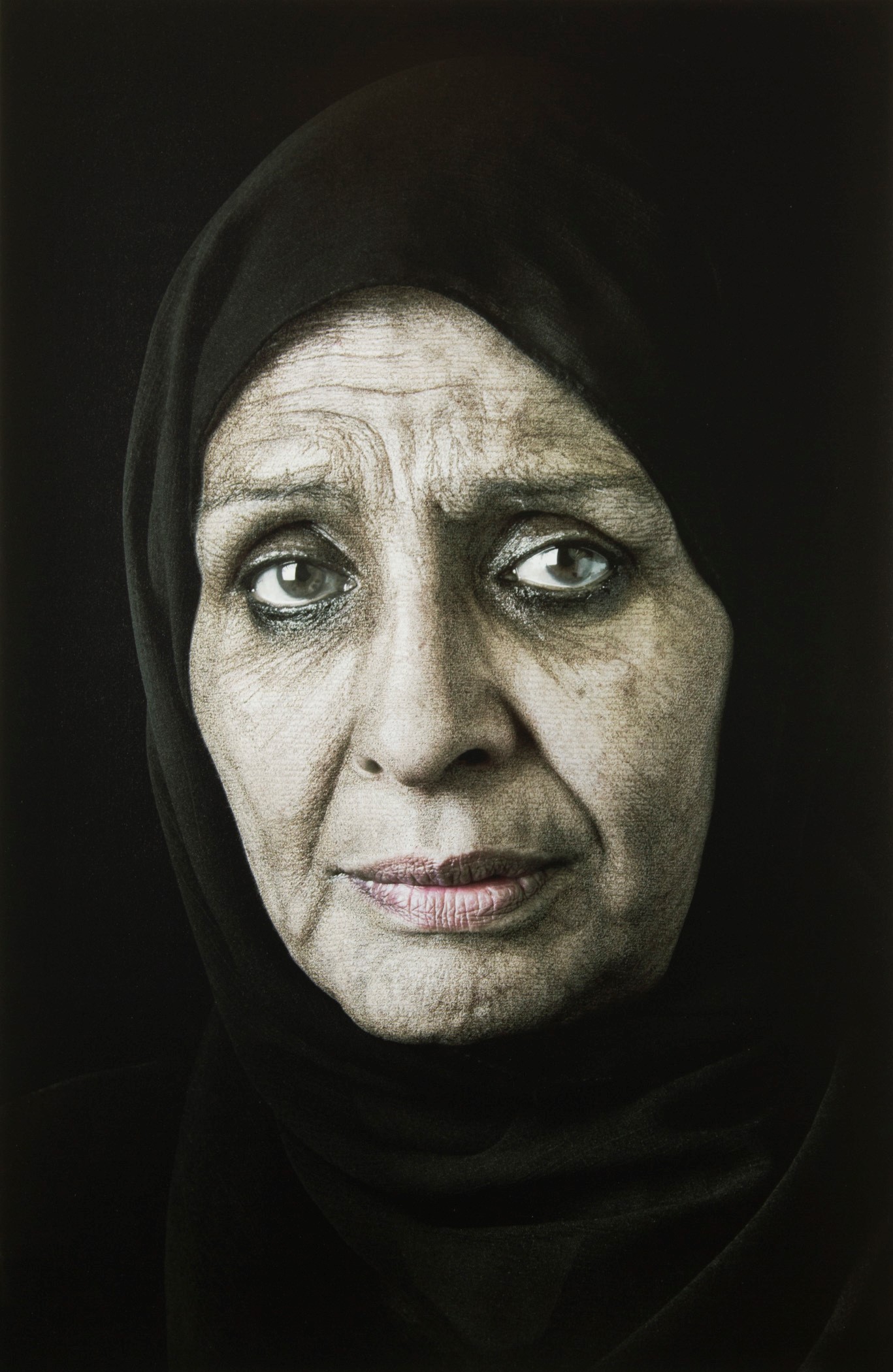 The photographic portrait, with its roots in early nineteenth-century France, has continually challenged how we view ourselves. Such works have become increasingly fluid over time and almost as difficult to grasp as the nature of identity itself. These portraits, in their early form, insisted on their realism, a mirror within the context of traditional painting. Photographs “furnish evidence,” as Susan Sontag observed in On Photography (1972), her seminal collection of essays on photography.
The photographic portrait, with its roots in early nineteenth-century France, has continually challenged how we view ourselves. Such works have become increasingly fluid over time and almost as difficult to grasp as the nature of identity itself. These portraits, in their early form, insisted on their realism, a mirror within the context of traditional painting. Photographs “furnish evidence,” as Susan Sontag observed in On Photography (1972), her seminal collection of essays on photography.
The contemporary photographic portrait, as explored in this exhibition, is diverse, yet tends to incorporate a common thread: the desire to say something about us as people. Some artists approach the medium as a means to tell a larger story, as seen in two portraits by Shirin Neshat, made in response to the Arab Spring and, specifically, to the harsh reality of displacement. Andres Serrano uses the photographic portrait to explore American identity. Still others, such as the photojournalist Donna Ferrato, employ photography as an agent for social change, in this instance, her crusade against domestic violence.
Several artists featured in the exhibition approach the tradition of the photographic portrait conceptually, in that the actual work of art is less about a specific person and more about the ideas the artist is trying to convey. Carrie Mae Weems and Lorna Simpson often use this strategy to confront issues surrounding race and the marginality of the black figure in art and culture. Kelli Connell, exploring the fluidity of gender roles and sexuality, employs forms of digital manipulation to give the appearance that what we see is an intimate moment between two people who almost seem to be mirror images of each other (in fact, they are the same person).
A number of artists are drawn to capturing the inner lives of their sitters or, in some cases, themselves. Kiki Smith, in Las Animas, depicts multiple representations of her body that can be characterized as a form of cathartic introspection. Four portraits from a larger body of work by Joyce Tenneson depict women in what she termed the “third phase of their lives.” Tenneson’s women face us with a fearless attitude, perhaps brought forward with age and the passage of time. Their histories are written in their faces, in their eyes, and across their bodies. Nan Goldin’s landmark, Clemens Cruising in the Glass, Tour d’Eiffel, Paris, is part of the artist’s ongoing project to document the intimate lives of her circle of friends, often those on the periphery of mainstream society, taking private moments into the public sphere.
What does it mean when the creation of identity takes place in societal isolation, a space void of all external associations and influences? The Dutch artist Roy Villevoye has confronted these ideas for more than two decades with a subtle, non-invasive approach to his subject, the Asmat in Papua New Guinea. We can imagine that the construction of these images must be strange for the sitters, as many Asmat living in these isolated communities have never even seen their own reflections in a mirror, much less captured in a photograph. For us, these photographs point to how little we know of those beyond our sphere and how ill-equipped we are to understand who they are as people. Yet, the very fact that we are able to see them in an art gallery or museum points to an end-game position, where even the most remote peoples on our earth are, in some respects, not far from us at all.
As noted by Joseph Mella, director and curator, “Portraits, in all their diversity, serve not only the needs of the sitter and artist, but also those of the viewer. Portraits give us clues to who we are as humans and the possibilities of what we could become.” Instagram and other forms of social media dominate the cultural landscape while the reliance on photography in our own lives increasingly presents questions about representation and identity that artists continue to navigate in surprising ways. Who are we, indeed, and what do we wish to become, and just how easy can it be to craft our own identities?
The first in a three-part series on portraiture, Who Are We? Identity and the Contemporary Photographic Portrait, is organized by the Vanderbilt Fine Arts Gallery and curated by Joseph Mella, director, with support provided by The Ingram Commons and Leslie Cecil and Creighton Michael, MA’76.
Free and open to the public, the exhibition will be on view through December 7, with closures for Fall Break (October 12–15) and Thanksgiving Break (November 18–26). Gallery hours are Monday to Friday 11 am–4 pm, weekends 1–5 pm.
The Fine Arts Gallery is located in Cohen Memorial Hall at 1220 21st Avenue South, on the western edge of the Peabody College campus. Parking is available in Lot 95, accessible from 21st Avenue South. For more information, visit the gallery’s website at www.vanderbilt.edu/gallery or call 615.322.0605.
*Ghada, photograph from Shirin Neshat’s monumental series Our House is on Fire (2013)
Posted by vrcvanderbilt on September 14, 2017 in Events, Fine Arts Gallery, HART, History of Art, News, Student/Alumni, VRC
Kevin Murphy Among Architectural Historians Remembering America’s Lost Buildings
The Conversation, “Remembering America’s Lost Buildings” (August 31, 2017) on historic preservation: Unfortunately, all cannot be salvaged. Preservation efforts must be galvanized; they require mobilization, time and resources. We reached out to five architecture professors and posed the following question: What’s one American structure you wish had been saved?
While their responses vary – from an unassuming home nestled in the suburbs of Boston to a monument of 19th-century wealth and glamour – none of the structures could resist the tides of decay, development and discrimination. . . . Read more in The Conversation, including Kevin Murphy’s article on the Rachel Raymond House, Belmont, Massachusetts. Murphy is Andrew W. Mellon Chair in the Humanities and professor/chair of the History of Art department.
Posted by vrcvanderbilt on September 1, 2017 in HART, VRC
How Art Museums in Houston and Environs Prepared for Harvey and its Aftermath
 Over the past five days, Tropical Storm Harvey, the worst storm to hit the Houston, Texas, region in 50 years, has devastated the country’s fourth-largest city. Along with being home to one of the most diverse populations in America, Houston and its surrounding areas also house a stunning accumulation of modern, contemporary and community-based art.
Over the past five days, Tropical Storm Harvey, the worst storm to hit the Houston, Texas, region in 50 years, has devastated the country’s fourth-largest city. Along with being home to one of the most diverse populations in America, Houston and its surrounding areas also house a stunning accumulation of modern, contemporary and community-based art.The Huffington Post (August 30, 2017) reached out to a variety of art institutions in the area, who graciously took the time to describe how they readied themselves for Harvey and what they plan to do after the storm subsides. Read more….
*Rothko Chapel, Houston
For more information, ARTnews has a webpage on the hurricane that “is being continuously updated with details about Harvey’s effects on Texas’s art community.”
Posted by vrcvanderbilt on August 31, 2017 in Events, HART, VRC
Vivien Fryd Interviewed by WNYC Radio About the Art and Politics of the U.S. Capitol Building
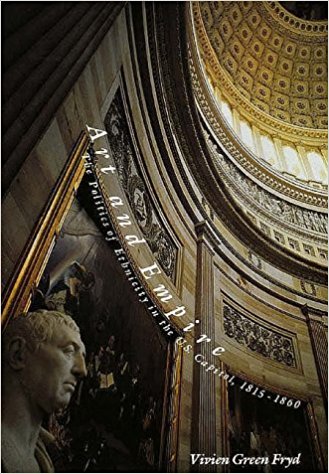 Since 1864 each of the states has donated two statues of historic importance to be placed in the U.S. Capitol building as part of the National Statuary Hall Collection. Vivien Fryd, professor of history of art and author of Art and Empire: The Politics of Ethnicity in the United States Capitol, 1815-1865, talked about the art and politics of the U.S. Capitol building in an August 23 interview with Indira Laskshmanan, a Washington coluumnist for The Boston Globe.
Since 1864 each of the states has donated two statues of historic importance to be placed in the U.S. Capitol building as part of the National Statuary Hall Collection. Vivien Fryd, professor of history of art and author of Art and Empire: The Politics of Ethnicity in the United States Capitol, 1815-1865, talked about the art and politics of the U.S. Capitol building in an August 23 interview with Indira Laskshmanan, a Washington coluumnist for The Boston Globe.
The interview was aired on The Takeaway, produced by Public Radio International, WGBH and WNYC. The Takeaway had recently examined how Confederate statues proliferated in the South in the early 20th century and invited Fryd to examine how the same phenomenon is present in the U.S. Capitol building.
Posted by vrcvanderbilt on August 28, 2017 in Events, HART, HART in Nashville, VRC
Nashville Arts Magazine Features Articles on Current Exhibits in Vanderbilt Fine Arts Gallery
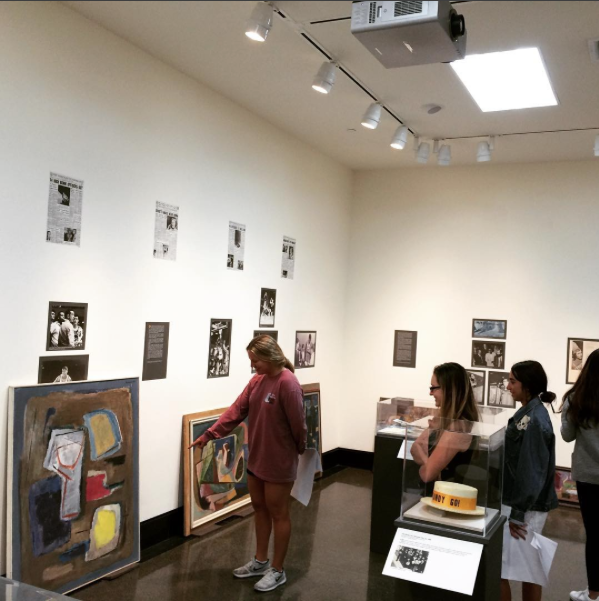 *Kevin Murphy’s students in the Vanderbilt Fine Arts Gallery, immersed in the initial stages of curating the current exhibition, American Modernism at Mid-Century: The Work of Morris Davidson, which closes September 17
*Kevin Murphy’s students in the Vanderbilt Fine Arts Gallery, immersed in the initial stages of curating the current exhibition, American Modernism at Mid-Century: The Work of Morris Davidson, which closes September 17
“Part of the prestige of any museum or gallery is the ability to bring to the public the artistic contributions of cultures or the long-forgotten works of pioneers in an artistic genre. It is likewise prestigious and rare for art students to curate such exhibits. For the fourth year, art history students of Kevin D. Murphy, the Andrew W. Mellon Professor of the Humanities and Chair of Vanderbilt’s History of Art Department, have been given curatorial responsibility for an exhibition.” Read more in DeeGee Lester’s article, Nashville Arts Magazine’s Art Smart: Vanderbilt Fine Arts Gallery – The Rediscovery of Morris Davidson.
 “For generations, the allure of Europe has stood as a cathedral to culture, and the Grand Tour, its pilgrimage. As an educational travel tour of Europe, undertaken by young nobles often accompanied by an artist, the Grand Tour served to develop tastes and refine young minds through the temper of history. American Artists and the Legacy of the Grand Tour, 1880–1960 pays respect to these traditions, following the footsteps of American artists as they pursued the precedents of artists past, creating bodies of work that praised this legacy.” Read more in Megan Kelley’s article, Nashville Arts Magazine’s Rendered in Praise: American Artists and the Legacy of the Grand Tour, 1880-1960.
“For generations, the allure of Europe has stood as a cathedral to culture, and the Grand Tour, its pilgrimage. As an educational travel tour of Europe, undertaken by young nobles often accompanied by an artist, the Grand Tour served to develop tastes and refine young minds through the temper of history. American Artists and the Legacy of the Grand Tour, 1880–1960 pays respect to these traditions, following the footsteps of American artists as they pursued the precedents of artists past, creating bodies of work that praised this legacy.” Read more in Megan Kelley’s article, Nashville Arts Magazine’s Rendered in Praise: American Artists and the Legacy of the Grand Tour, 1880-1960.
*John Taylor Arms (American, 1887-1953), La Mangia, Siena, etching on woven paper, 1927. Gift of Thomas B. Brumbaugh, professor of fine arts, emeritus, Vanderbilt University. On view in the exhibition, Rendered in Praise: American Artists and the Legacy of the Grand Tour, closing August 26
Posted by vrcvanderbilt on August 18, 2017 in Fine Arts Gallery, HART, Student/Alumni, VRC
“O dark, dark, dark, amid the blaze of noon” : Celebrating the Great American Total Solar Eclipse 2017
 A once-in-a-lifetime celestial event will occur on Monday, August 21, when the first solar eclipse in 99 years sweeps across the United States, with Nashville in its direct path. Skies will darken in totality from the Pacific Ocean to the Atlantic—from Oregon to South Carolina—along a stretch of land about 70 miles wide through 14 states. Nashville is one of the largest metropolitan areas in the country with a full view of the eclipse.
A once-in-a-lifetime celestial event will occur on Monday, August 21, when the first solar eclipse in 99 years sweeps across the United States, with Nashville in its direct path. Skies will darken in totality from the Pacific Ocean to the Atlantic—from Oregon to South Carolina—along a stretch of land about 70 miles wide through 14 states. Nashville is one of the largest metropolitan areas in the country with a full view of the eclipse.
Solar eclipses—the total blackening of the sun by the moon—provoke wonder in many forms and have functioned as powerful metaphors or backdrops in literature and the visual arts of different cultures throughout the world. Long a source of mystery and fascination, the celestial phenomenon frequently appears in the background of European Medieval and Renaissance scenes of the Crucifixion to symbolize the unparalleled darkness and despair  described in the Gospel of Luke (for example, “Death of Christ,” early 15th-century illuminated manuscript page from Très Riches Heures du Duc de Berry by the Limbourg Brothers).
described in the Gospel of Luke (for example, “Death of Christ,” early 15th-century illuminated manuscript page from Très Riches Heures du Duc de Berry by the Limbourg Brothers).
In Japanese woodblock prints the inclusion of an eclipse serves to intensify the eeriness of ghost scenes. Right after the murder of Duncan, the king of Scotland, in Shakespeare’s Macbeth, the Thane of Ross looks heavenward and observes: “By the clock, ’tis day, and yet dark night strangles the travelling lamp: Is’t night’s predominance, or the day’s shame, that darkness does the face of earth entomb, when living light should kiss it?”
To celebrate the upcoming event, we reflect on several other authors and visual artists who were inspired by this “obliteration” of the sun:
Homer, The Odyssey: The return of Odysseus to his kingdom and to Penelope is accompanied by a seer’s vision of an eclipse—“the Sun has been obliterated from the sky, and an unlucky darkness invades the world.”
William Shakespeare, King Lear: “These late eclipses in the sun and moon portend no good to  us,” says Gloucester. “Nature finds itself scourged by the sequent effects. Love cools, friendship falls off, brothers divide, in cities mutinies, in countries discord, in palaces treason, and the bond cracked ‘twist son and father . . . We have seen the best of our time. Machinations, hollowness, treachery, and all ruinous disorders follow us disquietly to our graves.”
us,” says Gloucester. “Nature finds itself scourged by the sequent effects. Love cools, friendship falls off, brothers divide, in cities mutinies, in countries discord, in palaces treason, and the bond cracked ‘twist son and father . . . We have seen the best of our time. Machinations, hollowness, treachery, and all ruinous disorders follow us disquietly to our graves.”
John Milton, Samson Agonistes: O dark, dark, dark, amid the blaze of noon,/Irrecoverably dark, total eclipse/Without all hope of day!”
William Wordsworth, Memorials of a Tour on the Continent, 1820: “High on her speculative tower/Stood Science waiting for the hour/When Sol was destined to endure/’That’ darkening of his radiant face/Which Superstition strove to chase,/Erewhile, with rites impure.”
Ramón Gómez de la Serna, Greguerías: Among the Spanish poet’s signature haiku-like epigrams is one that reads, “After the eclipse the Moon washes its face to clean up the soot.” The Mexican muralist Diego Rivera subsequently painted a total eclipse of the sun in the right eye of the poet in his 1915 portrait.
 Annie Dillard, “Total Eclipse,” from Teaching a Stone to Talk: “I had seen a partial eclipse in 1970. A partial eclipse is very interesting. It bears almost no relation to a total eclipse. Seeing a partial eclipse bears the same relation to seeing a total eclipse as kissing a man does to marrying him, or as flying in an airplane does to falling out of an airplane. Although the one experience precedes the other, it in no way prepares you for it.”
Annie Dillard, “Total Eclipse,” from Teaching a Stone to Talk: “I had seen a partial eclipse in 1970. A partial eclipse is very interesting. It bears almost no relation to a total eclipse. Seeing a partial eclipse bears the same relation to seeing a total eclipse as kissing a man does to marrying him, or as flying in an airplane does to falling out of an airplane. Although the one experience precedes the other, it in no way prepares you for it.”
What inspiration will the solar eclipse provide for today’s authors and visual artists?
The entire Vanderbilt community is invited to experience the historic total solar eclipse at an open house and viewing party August 21 on the main campus. The day begins at the Wond’ry with an educational open house (9 a.m. until noon) featuring a variety of eclipse-related programming, including videos and activities.
Everyone will gather on Alumni Lawn to don special eclipse-viewing glasses in preparation for totality at 1:27 p.m. Attendees should arrive at 1 p.m. to enjoy all the key astronomical moments that occur just before total darkness. Entertainment, special eclipse videos, a live feed from NASA, and frozen treats will be provided.
*Limbourg Brothers (French, fl. 1404-1416). Death of Christ, from Très Riches Heures du Duc de Berry, completed before 1416.
*Antoine Caron (French, 1521-1599). Dionysius the Areopagite Converting the Pagan Philosophers, oil on panel, 1570s, The J. Paul Getty Museum.
*Zakariya ibn Muhammad Qazwini (Islamic, ca. 1203-1283). Solar Eclipse, leaf from Turkish version of the “Wonders of Creation,” ink and pigments on European laid paper, 1717, The Walters Art Museum.
*Giuliano Pesello, painter; Filippo Brunelleschi, architect. San Lorenzo, Old Sacristy, view of the small dome of the apse with the celestial hemisphere, fresco, ca. 1433-1443.
Posted by vrcvanderbilt on August 15, 2017 in Events, HART, VRC

©2025 Vanderbilt University ·
Site Development: University Web Communications